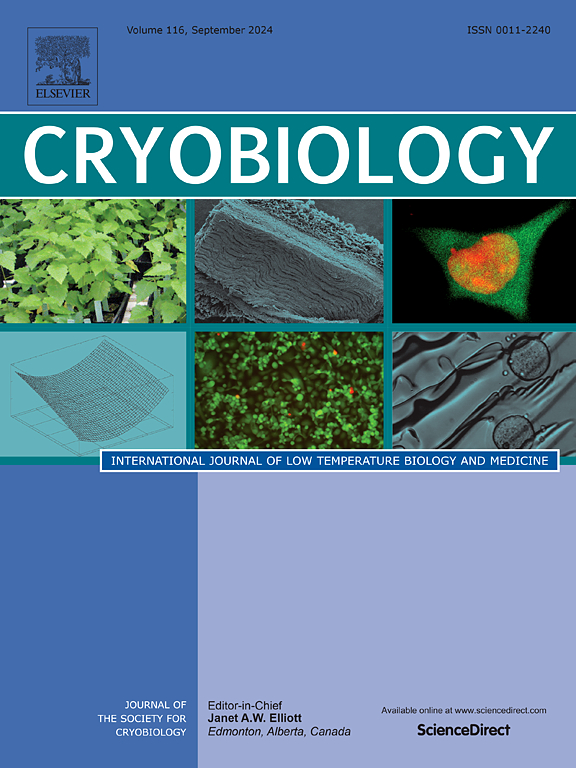Understanding osmoregulation, cryoprotectant toxicity, and cold tolerance in sea urchin eggs: Implications for cryopreservation
IF 2.1
3区 生物学
Q2 BIOLOGY
引用次数: 0
Abstract
This study investigates the challenges and potential solutions for cryopreserving sea urchin (Paracentrotus lividus) eggs. It focuses on understanding the thresholds and osmoregulatory mechanisms, cryoprotectant toxicity, and cold tolerance in these eggs, which are especially difficult to preserve due to high sensitivity to cryoprotectants and low-temperature injury. Key findings suggest that stepwise addition of cryoprotectants, particularly dimethyl sulfoxide (Me2SO) combined with other agents like DMF or methanol, reduces toxicity and enhances larval survival. The study also highlights that short-term exposure to low temperatures (4 °C) minimally impacts egg viability, offering insights for optimizing cooling protocols. By examining osmolarity, salinity, and cryoprotectant interactions, the research proposes vitrification as a promising cryopreservation technique. These findings will contribute to refining current embryo cryopreservation protocols and provides information for the future vitrification of sea urchin eggs, with implications for marine conservation and aquaculture.
了解海胆卵的渗透调节、低温保护剂毒性和耐寒性:对低温保存的影响
本研究探讨了低温保存海胆(Paracentrotus lividus)卵的挑战和可能的解决方案。重点是了解这些卵子的阈值和渗透调节机制、冷冻保护剂的毒性和耐寒性,这些卵子由于对冷冻保护剂和低温损伤的高度敏感性而特别难以保存。主要研究结果表明,逐步添加冷冻保护剂,特别是二甲亚砜(Me2SO)与DMF或甲醇等其他药剂联合使用,可以降低毒性并提高幼虫存活率。该研究还强调,短期暴露在低温(4°C)下对卵子活力的影响最小,为优化冷却方案提供了见解。通过检查渗透压、盐度和冷冻保护剂的相互作用,研究提出玻璃化是一种很有前途的冷冻保存技术。这些发现将有助于完善目前的胚胎冷冻保存方案,并为未来的海胆卵玻璃化提供信息,对海洋保护和水产养殖具有重要意义。
本文章由计算机程序翻译,如有差异,请以英文原文为准。
求助全文
约1分钟内获得全文
求助全文
来源期刊

Cryobiology
生物-生理学
CiteScore
5.40
自引率
7.40%
发文量
71
审稿时长
56 days
期刊介绍:
Cryobiology: International Journal of Low Temperature Biology and Medicine publishes research articles on all aspects of low temperature biology and medicine.
Research Areas include:
• Cryoprotective additives and their pharmacological actions
• Cryosurgery
• Freeze-drying
• Freezing
• Frost hardiness in plants
• Hibernation
• Hypothermia
• Medical applications of reduced temperature
• Perfusion of organs
• All pertinent methodologies
Cryobiology is the official journal of the Society for Cryobiology.
 求助内容:
求助内容: 应助结果提醒方式:
应助结果提醒方式:


